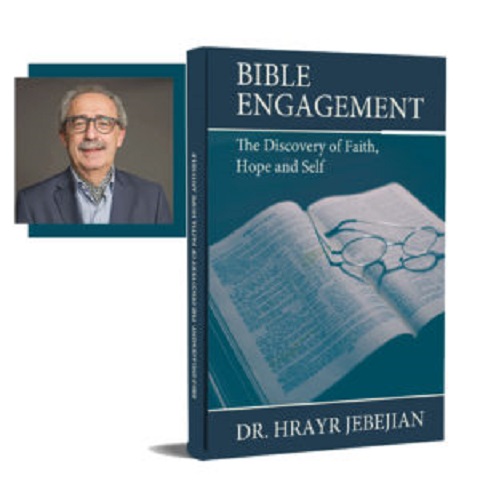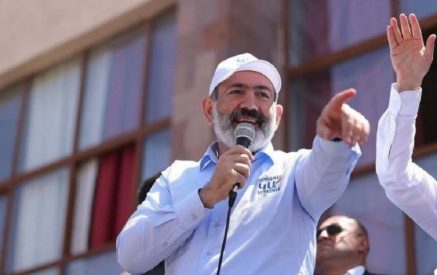Bible Engagement: The Discovery of Faith, Hope and Self
Dr. Hrayr Jebejian
Lebanon: Bible Society in the Gulf, 2019
138 pp.
Hardcover
Dr. Hrayr Jebejian’s lively and well-organized study Bible Engagement: The Discovery of Faith, Hope and Self will stretch your understanding of the place of the Bible in missions in the region of the Gulf. For in this work, Dr. Jebejian, the longstanding General Secretary of the Bible Society in the Gulf (BSG), moves beyond the notion of evangelism through Bible translation and distribution; rather, his research demonstrates how the BSG strategically emphasizes Bible engagement in its vibrant and necessary ministry to a specific community of migrant workers in the United Arab Emirates. He captures this difference between translation and biblical engagement when he, drawing on the description of Catholicos Aram I, writes of the importance of “translat[ing] the Bible into the life of the community”—a worthy goal for every part of the world (p. 42). In ecumenical partnership with numerous churches, representing Roman Catholic, Eastern Orthodox and Anglican traditions, among others, the BSG has identified three chief ways to bring alive the hope of Jesus to people in dire straits who are far from home. The gospel is engaged—that is, the message of God’s victorious love is actively accessed for the sake of comprehension, inner transformation, and worship—through reading (i.e., the use of printed materials), listening (i.e., through audiovisual technologies) and storytelling techniques.
This work, which represents the research for which he received a Doctorate of Ministry from the New York Theological Seminary, proceeds in an orderly fashion. After brisk descriptions of the Gulf region (Chapter 1) and the history of Christianity there (Chapter 2), the focus of the study is introduced: the people group of the Telugus (introduced in Chapter 3, pp. 27–31) in the United Arab Emirates. The tools of Biblical Engagement (BE) are described in Chapter 4. Having supplied this background, in Chapter 5 Dr. Jebejian presents his research project of interviewing 18 Telugu Christians. He breaks down Christian theology into the phrases “Jesus finds,” “Jesus saves,” and “Jesus leads” (p. 57)—phrases with which Telugu believers frame their own faith lives in their interviews.
Read also
It was incredibly refreshing to find that the biblical stories that were featured in Dr. Jebejian’s research among the Telugu community all centered around stories of women’s encounters with Jesus. I relished seeing the power that the faith of these marginalized women held for marginalized Christian women and men living in the UAE. The texts, which I encourage you to enter into again in the spirit of BE, are Luke 13:10–17 (which tells of the bent over woman who could not straighten herself, whom Jesus healed one Sabbath after she suffered for eighteen years), Luke 8:40–48 (which tells of the healing of the bleeding woman), and Matthew 15:21–28 (which tells of the Canaanite mother whose dogged belief wins her daughter’s healing after Jesus’ initial protestation that he was sent only to the lost sheep of Israel).
Chapter 6 is riveting reading, as we are exposed to the words and thoughts of Dr. Jebejian’s subjects, who share their understanding of hope, name their own deep desires for the future and describe their relationship with one of the three tools of BE (pp. 68–94). For example, I gained insight from Prasad, who was most struck by the story of the crippled woman who was sick for 18 years. Dr. Jebejian relays Prasad’s comments about this biblical heroine: “She did not lose her zeal all these years and waited patiently for God to heal her. We know this because she was in the synagogue on a Sabbath, waiting on God. God is the God of impossibilities” (p. 70). And I drew encouragement from the godly confidence and peace of Kumari, who states, “Like these women, I will never leave God no matter how difficult my life is. … I know that [God] will do a miracle in my life, as I want to get married and have children. In the meantime, I am at peace and satisfied with my life” (p. 69). These and other powerful statements caused Holy Spirit-pangs in my whiny, wimpy, doubt-riddled conscience. Ultimately, they spurred me onto greater faith in and love for God, while building a sense of connectedness with these Telugu believers.
Chapter 7 provides reflections from local pastors, who, again, represent a range of Christian and ethnic traditions. One pastor reports that church attendance doubled once he began incorporating the storytelling tool in his sermons—a result that surely appeals to many of the pastors among our Armenian Evangelical churches (p. 106). Biblical Engagement concludes with a brief recapitulation of lessons learned and a short statement of possible directions for future research.
Of all of the material in the book, I wish in particular to read more about the storytelling approach to making meaning of the Scriptures (pp. 49–51). I see great potential for the adoption of that approach in Armenian Evangelical contexts, particularly among our youth. According to Dr. Jebejian, storytelling aims “to train people in telling Bible stories and to invite listeners to discover the treasures in the stories so that they own and apply the lessons in their lives” (p. 50). Imagine employing the following practice and translating the following outcomes to your congregation:
First, the audience hears a Bible story three times, and then discusses it with a set of questions. At the end of the exercise, the audience contributes personal insights and applications. As they discuss story after story, they gain more confidence in telling a story to others on their own. They consider: What can we learn about God in this story? What is He telling me today about my present situation? Those who are trained go to the ministry field and engage the migrant communities with the message of the Bible. (ibid.)
What would be different about your own faith if you could weave yourself into biblical narratives? How would the life of your local church body change with this interactive style of biblical engagement during a Sunday worship service? Would you, your family and your church friends be more comfortable sharing stories about Jesus with others during the work week, drawing your neighbors and co-workers and estranged family members into the Kingdom of God, where they can find forgiveness and consolation, if you were trained in biblical storytelling?
There are many enjoyable things about this book. I loved the discrete facts and big-picture truths that I learned from it. While I was intrigued by the biblical trivia that “[o]ut of the 183 times Jesus was asked a question, he responded with a direct answer only three times” (p. 50), I was led to ponder the implication of Jesus’ proclivities for using parables and asking questions for how best to conduct Christian ministry. It was beneficial learning about Christian sisters and brothers from India who identify as Telugu and becoming slightly better informed about our vast world. Did you know, for example, that 70 million people in the world speak Telugu? (p. 28) (Is that roughly 11.5 times more than those who speak Armenian?) Dr. Jebejian reveals the striking statistic that the UAE has the highest ratio of expatriate-to-local population in the world: 84-percent (p. 17). Quite simply: the luxury of one of the world’s most oil-rich countries is being ‘secured’ off the hands and backs of foreign laborers who are paid next to nothing. My heart ached as I considered the injustices and difficulties of the reality of vulnerable workers—maids, construction workers, hotel porters—in a foreign land of plenty. Even as I mourned the constraints and sorrows of these migrants’ living situations, I celebrated the breaking forth of the good news within their labor camps, marveled at their faith, and rejoiced in the stories of salvation and personal transformation that Dr. Jebejian relayed from their interviews. We can say of them: They will be comforted! Theirs is the kingdom of heaven! (Matthew 5:4, 3) Remembering the unity of the body of Christ is a call to intercede for Christians in the UAE in prayer, to care for their deliverance from abuse and to pursue the enforcement of their human rights; it is to affirm how repeatedly the Lord saved Israelites in this-worldly, material ways, and how that same Lord still saves today.
Most of all, I appreciated how Bible Engagement drew my attention to the theological virtue of hope. My heart was enlivened reading these words: “Christian hope generates the hope that arises from looking at the wounds but seeing things healed and whole and touches on all aspects of human life, both individual and social” (p. 40). We are better followers of Christ when we are strengthened in hope and when we see that hope applied to impossible-seeming social realities.
In sum, this readable volume, which is offered as a publication of the Bible Society in the Gulf, will interest everyone who has a stake in the growth and health of the global church; moreover, it will quicken the well-fed, securely-housed, apathy-prone Western believer to lean on and interact with the Word of God in such a way as to feed her faith, hope and self.




























































